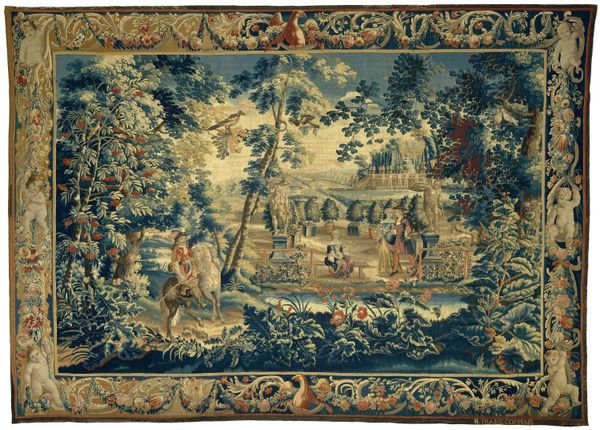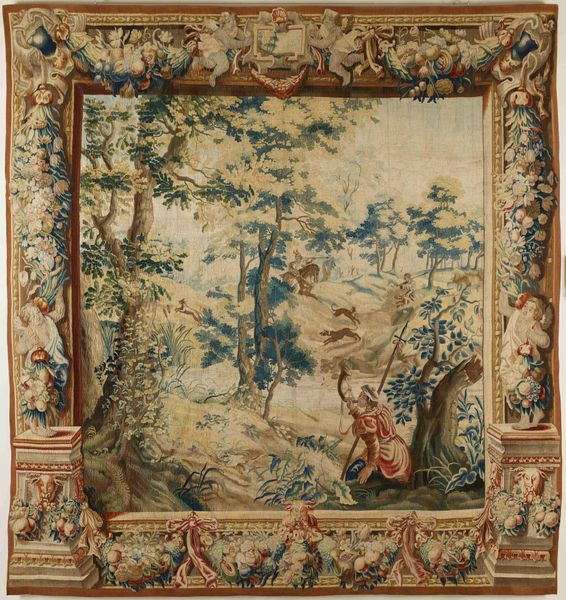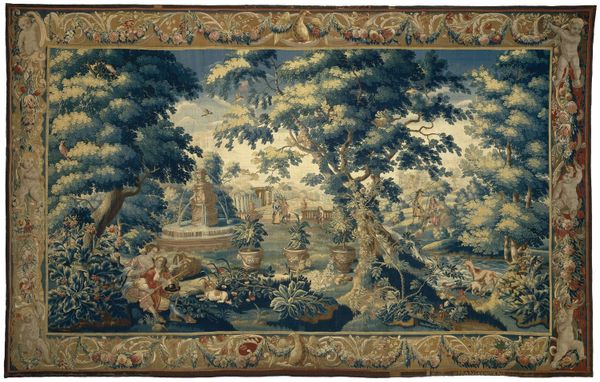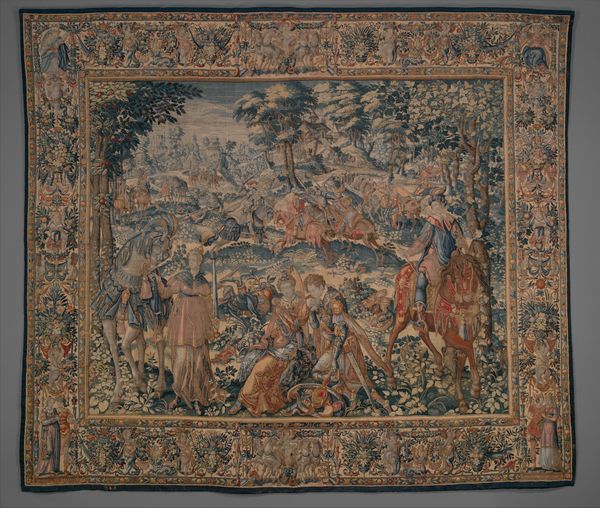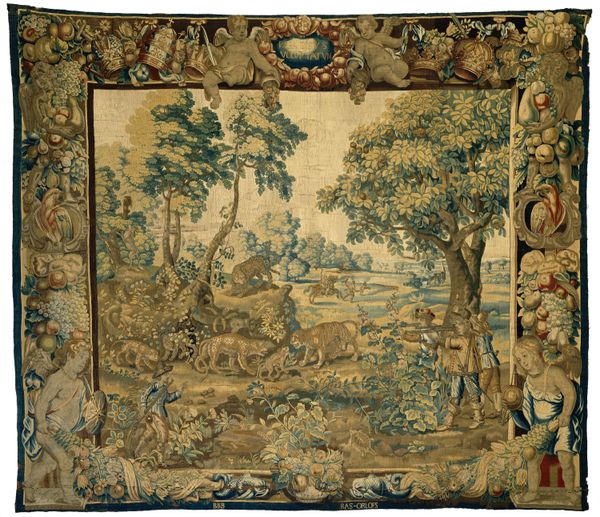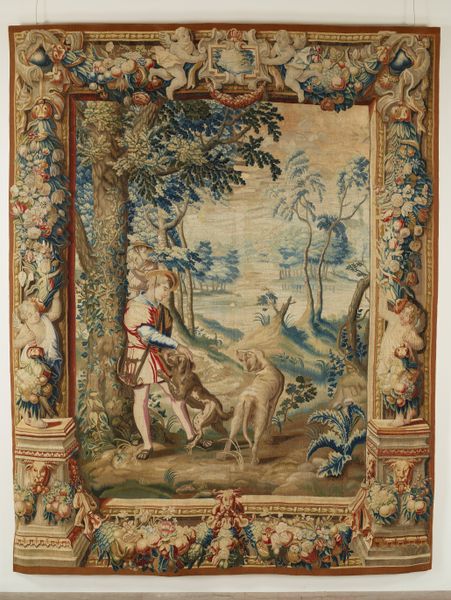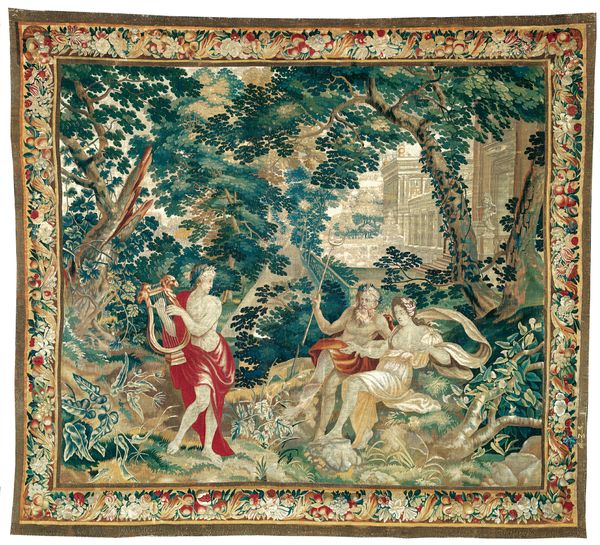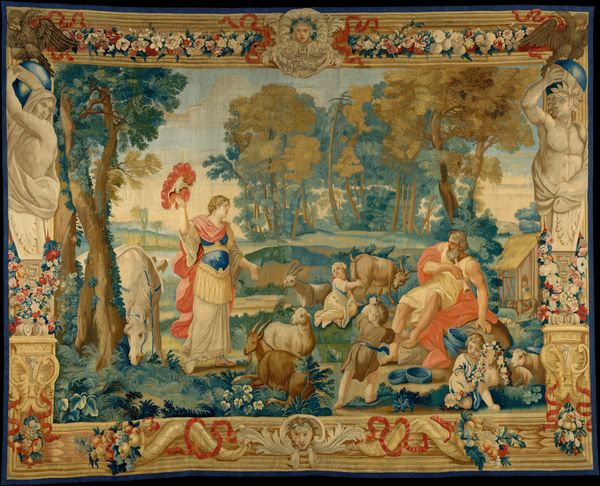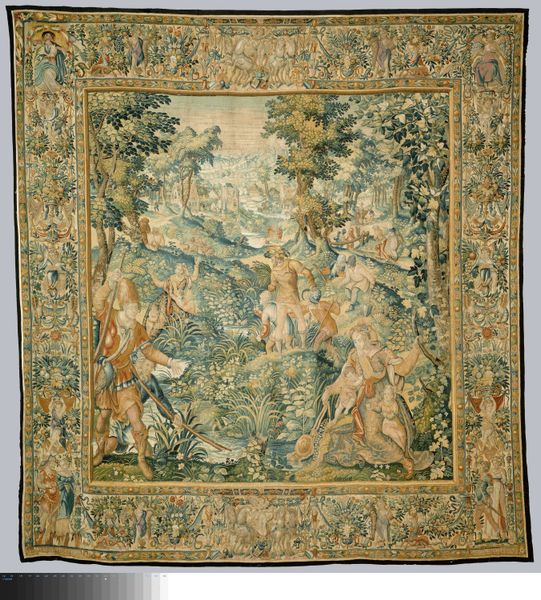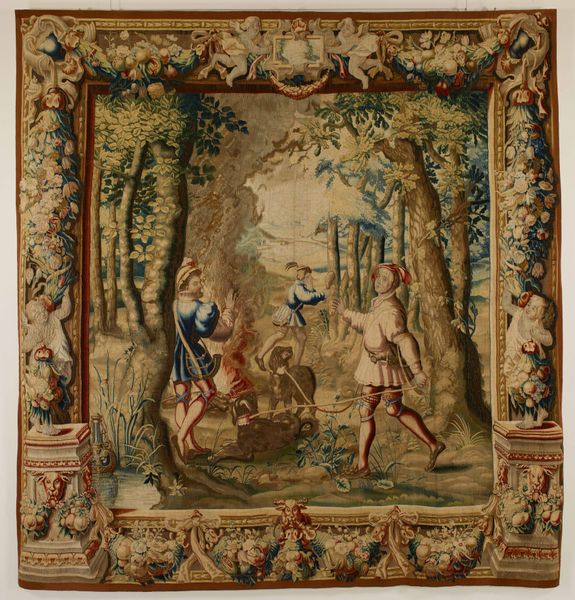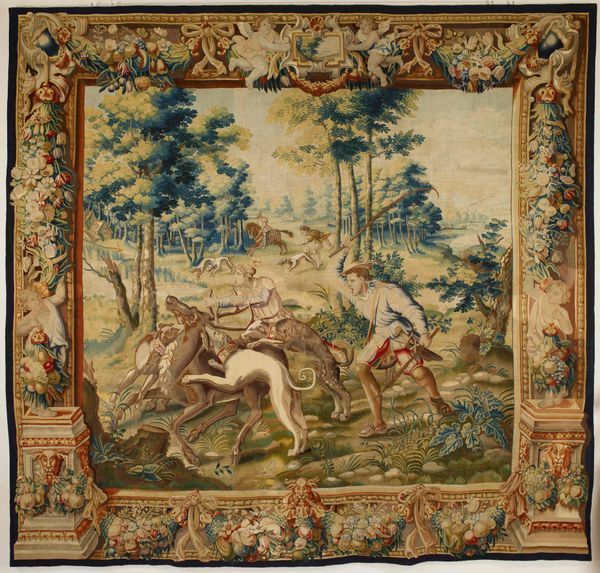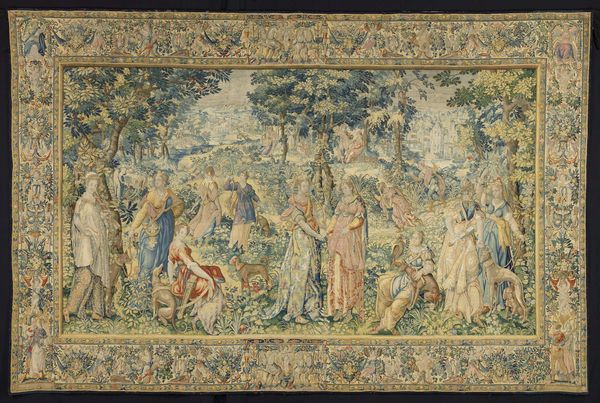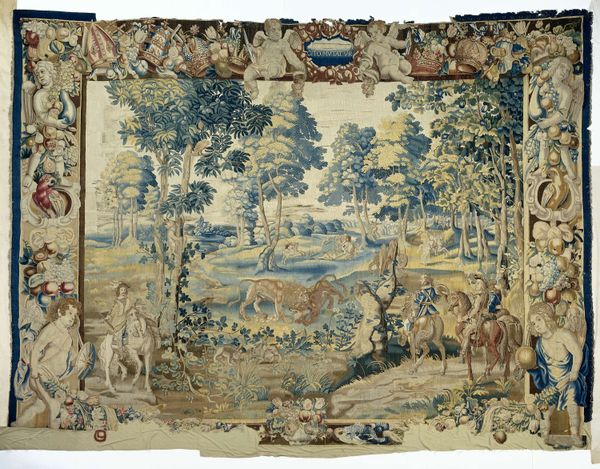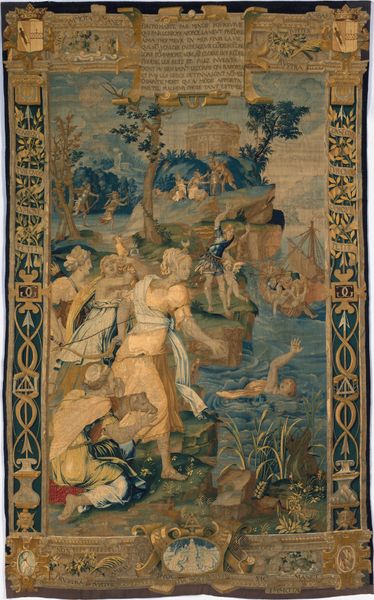
weaving, textile
#
narrative-art
#
baroque
#
weaving
#
landscape
#
textile
#
figuration
#
oil painting
#
genre-painting
#
history-painting
#
decorative-art
Dimensions: height 347.0 cm, width 434.5 cm
Copyright: Rijks Museum: Open Domain
Curator: Before us hangs a tapestry from between 1685 and 1740, believed to be crafted by François Coppens. It is titled “Parkgezicht met jagers met hun vangst.” Editor: It's striking. An almost dreamlike rendition of an idyllic hunting scene. There’s something ethereal about the muted blues and greens, and the floral border is such a charming element. Curator: Tapestries of this scale, particularly during the Baroque period, were immensely labor-intensive, involving workshops with specialized weavers. The sheer number of hours to produce a textile of this size speaks to its inherent value and the societal emphasis placed on craft and artistry. Editor: Look at the composition – the hunters proudly displaying their kill, the stylized trees, and the distant architecture. It evokes classic scenes of courtly leisure, reinforcing a sense of privilege and power visually. Are there specific iconographic elements woven within, that shed light on the symbolism, or purpose of the artwork? Curator: Given the time period, the scene presents a tableau of aristocratic leisure. Depictions of hunts often mirrored political power dynamics. Also consider that wool and silk, the core components, were valuable commodities in their own right. These were often woven with specific dyeing techniques using costly organic pigments like indigo. Editor: Indeed, the very material contributes to the message. And the landscape itself – is that a controlled, idealized space? It suggests a dominion not only over nature but over artistic representation too. This connects to its symbolism for luxury and dominion during its creation, a tangible symbol of aristocratic dominance over the landscape and social order. Curator: Precisely. Owning and commissioning such works served to highlight a family's status, both through financial investment and by associating themselves with specific cultural narratives of class and land ownership. Editor: Thank you for that insightful breakdown. I initially viewed this as simply a pleasant hunting scene. However, looking at this piece and thinking about the cultural value as a status display is what creates a powerful viewing experience for the patron and an inspiring reflection on cultural meaning.
Comments
No comments
Be the first to comment and join the conversation on the ultimate creative platform.
